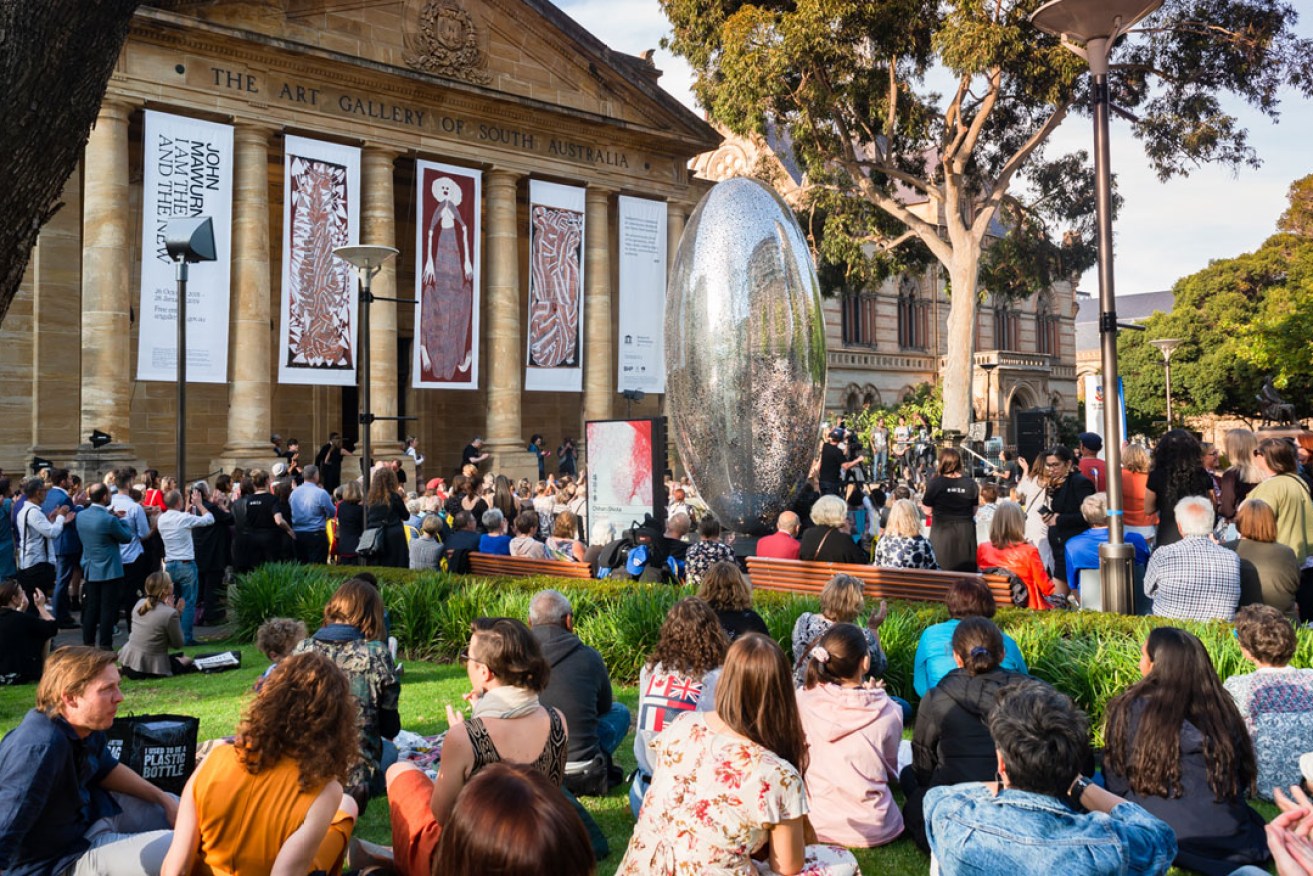Why we need to rethink ‘remote’
Rethinking the word ‘remote’ could help South Australia shake off decades of ingrained inferiority and polite apologetic behaviour, writes the Art Gallery of SA’s Lisa Slade.

'Who we are is where we are': The opening of Tarnanthi at the Art Gallery of SA. Photo: Nat Rogers
The room of 300 Sydneysiders were bemused when I described their city and their lives as remote.
Margin-dwellers is another term I used during my recent lecture at the Art Gallery of New South Wales. I expressed regret for their distant, peripheral location in this country, where I have the good fortune to live in its centre.
They tolerated me and my ambition, perhaps naive, to recast an entire history framed through geography.
My colleague Nici Cumpston (curator of Aboriginal & Torres Strait Islander Art) has always cautioned me about that word “remote”, in particular its use with regard to Aboriginal people and their lives.
“Remote communities” has become a catchcry too often used to describe APY communities, to label and “other” them. But Aboriginal people living in the centre of this land don’t live in distant communities – they are entirely at home, entirely central.
The word needs rethinking. And in recasting it, those of us living in South Australia get to shake off decades of ingrained inferiority and polite apologetic behaviour.
Thinking from the centre is what Adelaide enables and engenders. We see it in art, design, architecture, music, food and wine where the spirit of place – the genius loci, as the Romans called it – can be seen, heard, felt and tasted.
It’s not so easy to spot beyond the so-called creative industries but it’s lurking in business, science and politics, too.
This act of inverting long-held values, of flipping or turning upside down seemingly fixed ideas, isn’t so hard. We’ve got form. We’ve done it before. The European imagining of this entire continent from the first century forward was predicated on the idea of the unknown, the monstrous and, where we were lucky, the marvellous.
Aboriginal people have never been disoriented or “opposite footed” (antipodean). They’ve always known that their home wasn’t horror vacui on a map filled with dragons and demons. As Eora woman Cora Gooseberry told George French Angas in 1845, when white people arrived in their tall-masted ships they were seen by First Australians as demonic seaborne beasts. Those dragons drawn on maps for millennia (hic sunt dracones, or “here be dragons”) were always European in their making.
Recasting the remote requires imagination and tenacity, but also reconciliation.
The word of the moment, reconciliation, is as old in origin as those maps. It is a word that in its very etymology and structure brings things together again. Perhaps the accidental outcome of the acts of reconciliation, enacted through the development and implementation of RAPs (reconciliation action plans) across the county, is that we are not only reconciled with each other and with our history, but with where we are.
If who we are is where we are, then there is no such thing as remote.
Lisa Slade is assistant director, artistic programs, at the Art Gallery of South Australia.




